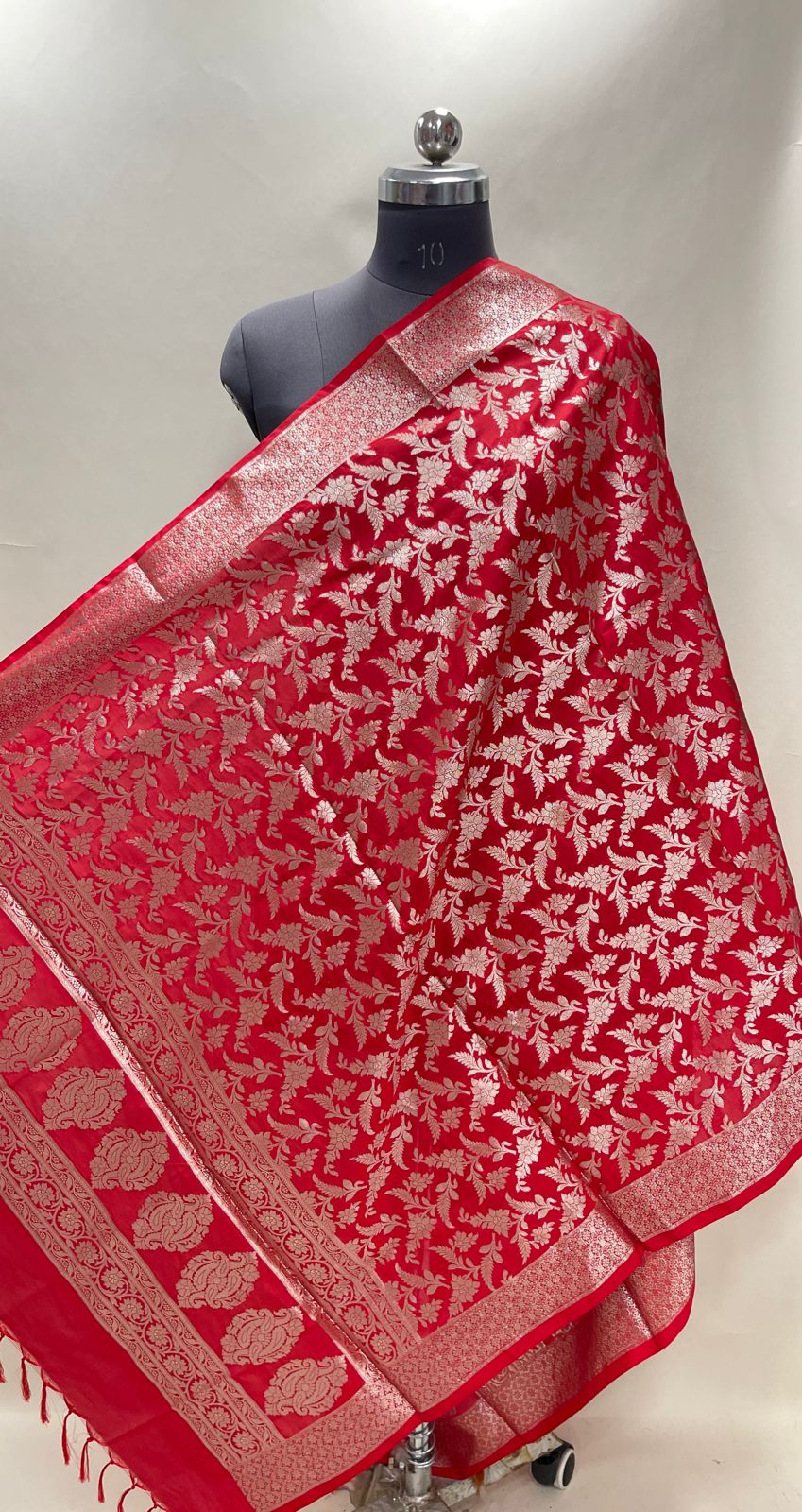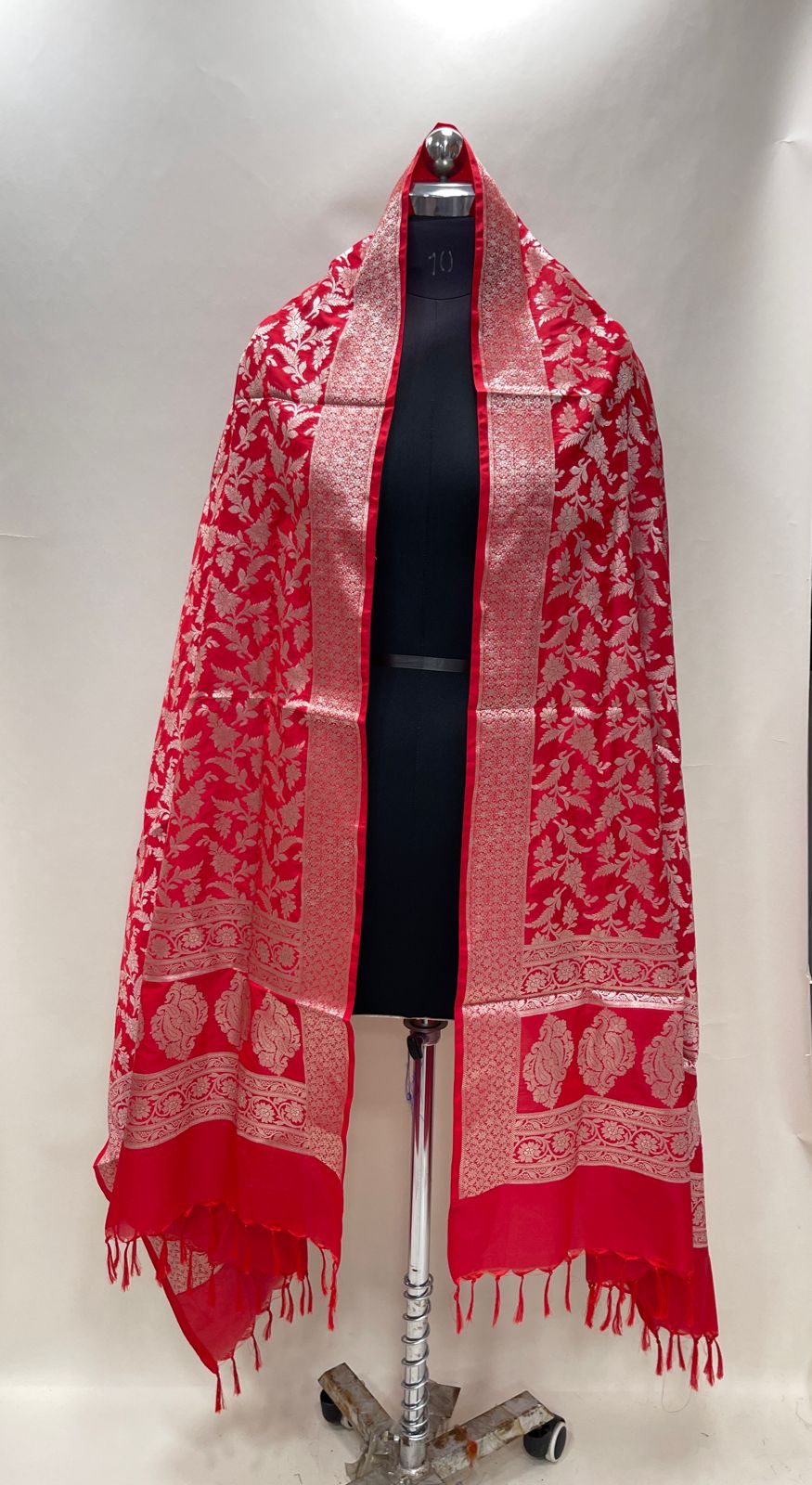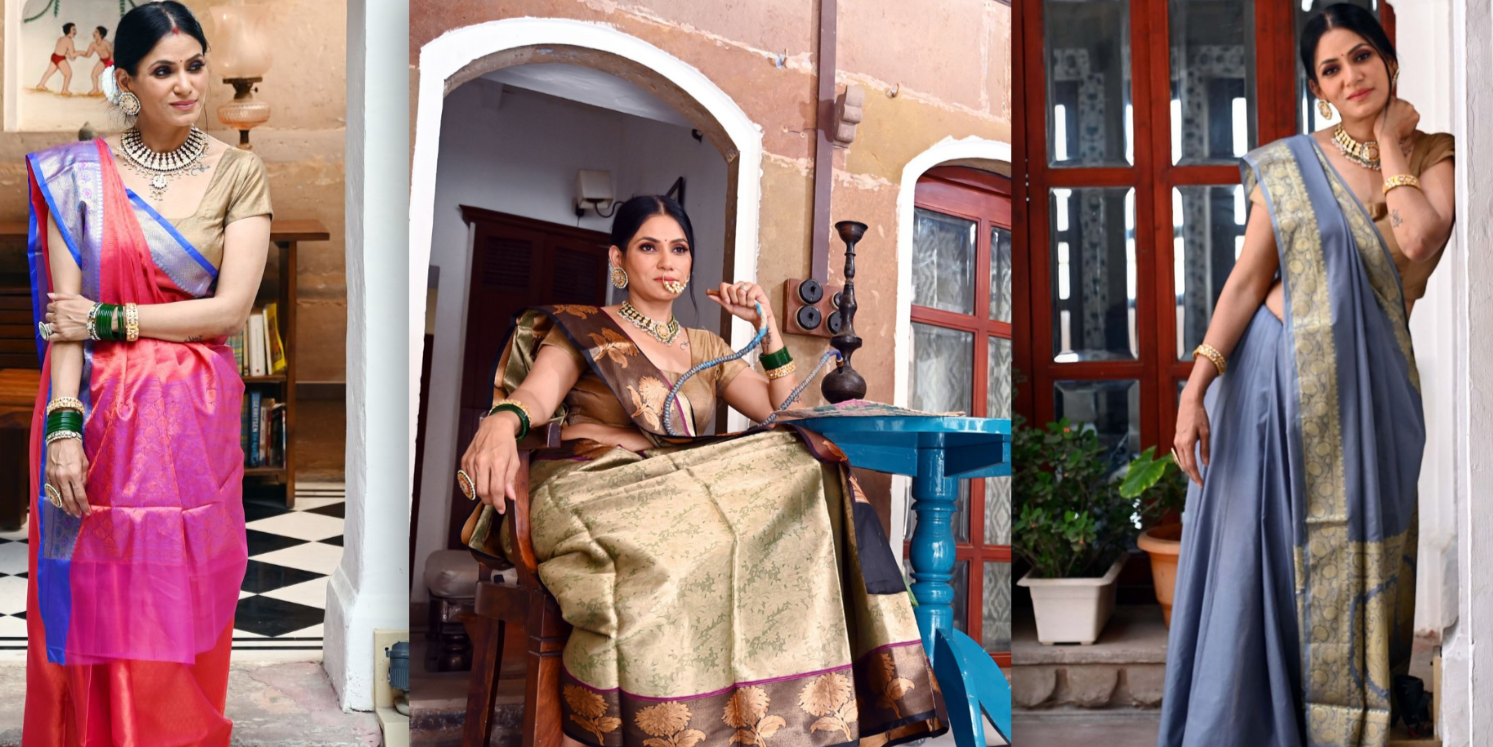Faishana Presents Red Semi Katan Silk Tilfi Zari Floral Jaal Paisley Boota Anchal Zari Border Banarasi Dupatta
Faishana Presents Red Semi Katan Silk Tilfi Zari Floral Jaal Paisley Boota Anchal Zari Border Banarasi Dupatta
SKU:BS31
Couldn't load pickup availability
Out of stock
Faishana presents the Red Semi Katan Silk Tilfi Zari Floral Jaal Paisley Boota Anchal Zari Border Banarasi Dupatta, an epitome of elegance and craftsmanship. This exquisite piece features intricate tilfi zari floral jaal work, enhanced by beautiful paisley boota motifs on the anchal and a detailed zari border. The vibrant red color adds a regal touch, making it an ideal choice for festive and special occasions, perfectly blending tradition with contemporary style.
The history of Katan weaving is a fascinating journey through time, reflecting the rich cultural and artistic heritage of India. Katan silk, known for its luxurious texture and intricate designs, has been an integral part of Indian textiles for centuries. Here’s a comprehensive look at the history of Katan weaving:
Origins and Early History
1. Ancient Beginnings:
- Silk in India: Silk production in India dates back to the Indus Valley Civilization (around 2500 BCE). However, the weaving of Katan silk specifically is believed to have originated much later.
- Persian Influence: The term "Katan" likely has Persian roots, reflecting the influence of Persian weaving techniques introduced to India, especially during the Mughal era.
2. Mughal Era (16th to 18th Century):
- Royal Patronage: The Mughal emperors, particularly Akbar, were great patrons of the arts, including textile weaving. They invited skilled weavers from Persia and Central Asia to their courts.
- Development of Katan Silk: Under Mughal patronage, Indian weavers began producing Katan silk, a fabric known for its strength and lustrous finish. It became a favored material for royal garments.
Evolution and Regional Specialties
1. Banaras (Varanasi):
- Weaving Hub: Varanasi emerged as a major center for silk weaving during the Mughal period. The city’s weavers became renowned for their intricate designs and high-quality Katan silk.
- Banarasi Katan Silk: The term “Banarasi” Katan silk refers to the exquisite silk woven in Varanasi, characterized by elaborate patterns and the use of zari (metallic thread) work.
2. Regional Variations:
- Gujarat: Katan silk weaving also flourished in Gujarat, where it was often combined with other weaving techniques to create unique textiles.
- South India: In South India, Katan silk was integrated into traditional weaving styles, adding to the diversity of Indian silk textiles.
Techniques and Craftsmanship
1. Handloom Weaving:
- Hand-Spun Yarn: Traditionally, Katan silk was made using hand-spun yarn. The silk threads were twisted to create a firmer and more durable fabric.
- Complex Patterns: Weavers used traditional handlooms to create intricate patterns, often inspired by nature, mythology, and Mughal architecture.
2. Zari and Brocade Work:
- Zari Embellishments: Zari's work, involving the use of gold or silver threads, became a hallmark of Katan silk. This added a luxurious and opulent touch to the fabric.
- Brocade Weaving: Katan silk often features brocade work, where patterns are woven into the fabric rather than being embroidered on top. This technique creates raised textured designs.
Cultural Significance
1. Royalty and Nobility:
- Symbol of Status: Katan silk garments were traditionally worn by royalty and nobility, symbolizing wealth and high social status. They were often part of royal attire during important ceremonies and festivals.
- Wedding Attire: Katan silk remains a popular choice for bridal wear, representing luxury and elegance in wedding ceremonies.
2. Traditional Festivals and Rituals:
- Festive Wear: During festivals like Diwali, Holi, and Eid, wearing Katan silk is considered auspicious. The fabric’s richness complements the festive spirit.
- Religious Significance: In many Indian traditions, silk is considered pure and is often used in religious rituals and offerings.
Modern Revival and Contemporary Trends
1. Preservation Efforts:
- Support for Artisans: There is a growing movement to support traditional weavers and artisans, ensuring the craft of Katan silk weaving is preserved for future generations.
- Government and NGO Initiatives: Various initiatives by the government and NGOs aim to promote traditional weaving arts through exhibitions, fairs, and online platforms.
2. Adaptation to Modern Fashion:
- Fusion Fashion: Contemporary designers are incorporating Katan silk into modern fashion, blending traditional techniques with modern aesthetics.
- Sustainable Practices: Some weavers are adopting eco-friendly practices, using natural dyes and sustainable methods to produce Katan silk.
Conclusion
The history of Katan weaving is a testament to India’s rich cultural heritage and the enduring appeal of its traditional textiles. From its Persian-influenced beginnings to its Mughal-era flourishing and contemporary revival, Katan silk has remained a symbol of luxury, craftsmanship, and cultural significance. As it continues to evolve, Katan silk weaving preserves its legacy while adapting to modern tastes and sustainable practices, ensuring its place in the world of high fashion and traditional attire.
Assured Quality
Assured Quality
Our products consist of good quality raw materials used, which assures you of the desired quality product.
Ready to Ship
Ready to Ship
Expertly Cross-Checked Products Ready to Ship from Our Warehouse.
Exchange & Returns
Exchange & Returns
Shop with confidence! We take customer satisfaction seriously. That's why we offer a 3-day, hassle-free return policy. No worries if something isn't quite right. Simply bring it back in its original packaging within 5 days, and we'll happily exchange it for something you love or give you store credit for a future purchase. The choice is yours! For complete details, check out our return policy. But for now, happy shopping!
Share




100% Authentic Products | 100% Secure Payments
Elevate your living space with the luxurious touch of our handcrafted artifacts and woven products. Experience the essence of craftsmanship.



